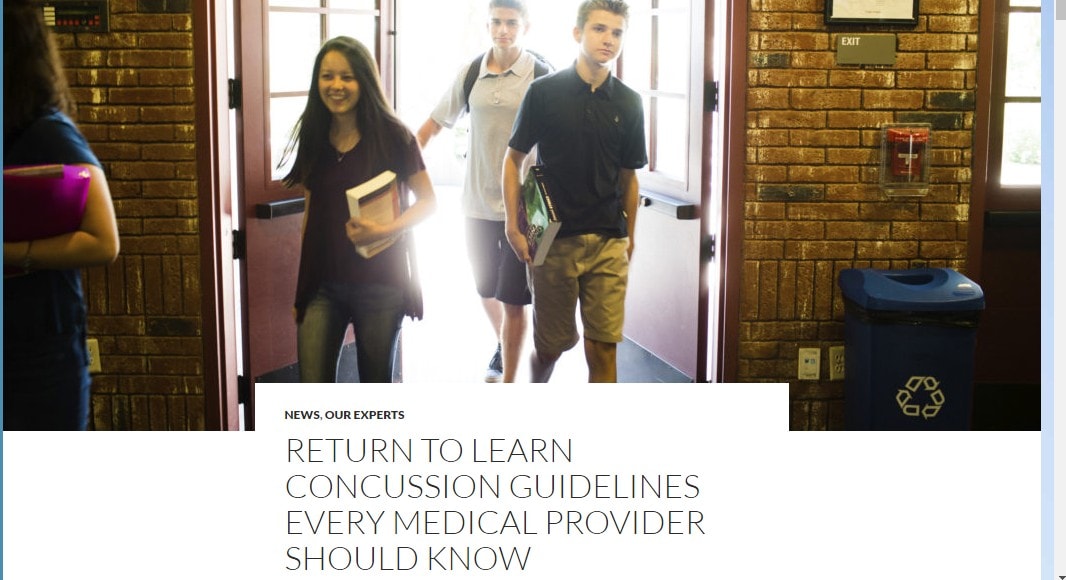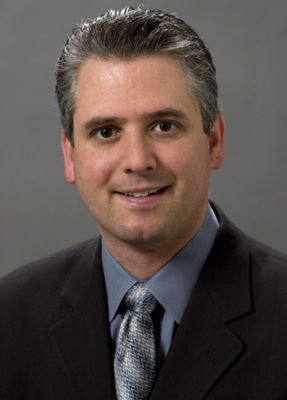
08 May Six Wise Steps to Guide Return-to-Learn After Concussion
“A step-wise concussion return-to-learn progression optimally takes a team approach including the student, family, medical and education teams. Flexibility and creativity in paying attention to individual student needs and concerns can make this process more rewarding for all parties.”
This article was originally posted in the CHOC Doc Blogs on May 1, 2017.
It is not intended to provide medical advice or diagnoses. The following information should not be used without the evaluation and supervision of a qualified medical provider.
While most medical providers are familiar with Return to Play laws – a step-wise progression addressing when student athletes with concussions should return to sports/physical activity – there is no similar legal process for “Return to Learn” guidelines addressing step-wise concussion return-to-learn progression.
Further, a study in the December 2016 Pediatrics found that only a few states have Return to Learn concussion laws, and these varied in delineation of responsibility. Some of the laws were restricted to student athletes, excluding students who sustained non-sport related concussions.

When returning a student to the classroom after a concussion, we try to balance stimulation levels and worsening of symptoms, explains Dr. Chris Koutures, a board certified pediatrician and sports medicine specialist at CHOC Children’s. While too much cognitive exertion can lead to headaches, problems concentrating, fatigue and trouble with emotional control, over restriction from classroom and academic activities can result in social isolation and anxiety about falling behind or lower grades that can also slow the recovery process.
Dr. Koutures advises the patient’s care team to follow CHOC’s recommended six stages for returning a student to school after a concussion, including the following added guidelines:
Step-wise Concussion Return to Learn Progression
Step 1: No formal academic activity
- Recent studies suggest that full or prolonged limitations in cognitive activity may actually delay recovery
- In first few days after concussion, allow 15-20 minute intervals of single-task activities that do not provoke symptoms and are not excessively taxing
- Listen to light music
- Draw or color
- Journal writing
- Audiobooks
- Passive television or movies (at home), larger screen preferred, lower volume
- Some texting, smartphone use; want to balance maintaining key social contacts with not having symptom-flare
- Conversations with 1-2 other people
- Separate the 15-20 minute bursts of activity by 30-40 minutes minimum of non-cognitive activity
- If symptoms flare before 15-20 minute limit, stop activity and try again later
- If patient can handle 2-3 periods of 15-20 minute activity over the course of day, can consider advancing toward partial return to school
Step 2: Light academic activity
- Attend 1-2 periods or 1-2 hours of school
- Select consecutive classes; have child help make decision
- No physical education or other activity classes
- Caution with more noisy classes such as woodshop, music/band, chorus
- Tend to avoid first class in morning to allow more sleep and arrival at school without busy parking lot and hallways
- Main goal: be in class; no responsibility for note-taking, participating in class /responding to teacher, in-class work, homework or testing
- Audible learning (most kids handle this better than visual learning after a concussion)
- Should have pre-printed notes for reference or have others take notes and share
- Sit away from louder students, windows, projectors, or other light/noise stimulation
- Sit close to teacher
- Allow to wear earplugs and sunglasses as needed
- May allow brief 1-2 minute periods of putting head on desk for rest
- May leave class early to avoid the noise and commotion of hallways during passing periods

Step 3: Increased academic activity
- Expand day to 3-4 periods or hours per day
- Incorporate break periods (nutrition break, lunch)
- Have quiet place to rest
- Recommend against assemblies or rallies due to noise stimulation
- Continue to avoid physical education or activity classes
- Main goal is to be in class and handle longer day; still not responsible for note-taking, participating in class/responding to teacher, in-class work or homework
Step 4: Full-time attendance
- Full-day attendance without activity or other higher-stimulation classes
- May expect some increased fatigue at end of school day
- If student wants to nap after school, limit to no more than one hour
- May start to take own notes, though helpful to have pre-printed teacher’s notes or other student notes
- Incorporate “to do” lists with short-block (10-15 minute) work periods followed by short (5 minute) breaks
- Break period and breaks in class (especially if block schedule) may still be needed
- If possible, move most challenging courses to time of day when student feels the best
Step 5: Return to Majority of Academic Activities
- Once handling full day attendance, can resume taking notes in class, verbal responses to teacher, and in-class work
- May begin homework starting with limits to 30-60 minutes a night and priority on essential concepts that are needed for eventual testing or continuity of learning
- Waive any projects, papers, essays or other assignments that are not required for future learning needs
- Try to limit burden of make-up work; focus should be on those assignments that are necessary for future learning
- Sequential classes (math, foreign languages, science) tend to be the most challenging for make-up work
- No tests or quizzes at this stage
- Audible learning – listen/speak responses vs. writing, dictating work, audiobooks may be more favorable at this point
Step 6: Return to Full Academic Activity
- Full-day attendance without symptoms, fulfilling all in-class duties and completing usual homework assignments
- Can resume tests and quizzes
- Strongly consider waiving missed tests or quizzes
- Combine missed tests or quizzes to allow more quick completion of make-up work
- Allow student to take missed tests/quizzes to gain exposure/mastery of material without being graded, or only receive grade if results are in usual level of achievement
- Assign grades at end of grading period based on level of work prior to concussion
- May need more time for test completion
- Consider individual room placement for testing
- May limit testing/make-up testing to one test per day
- May allow open book, use of notes, word banks or home-based testing
- Consider alternate forms of testing such as spoken test, or multiple choice vs. longer essay responses that might be more taxing for the student
- Students may still benefit from more audio learning
- Can resume physical education (with physician release) and activity courses.
Click here for more sport-related concussion information
VIDEO: Return to Sport after Concussion
